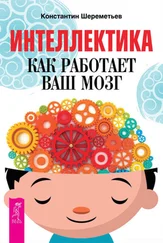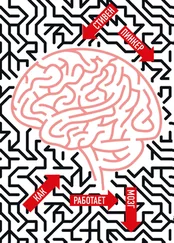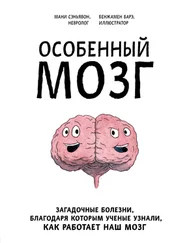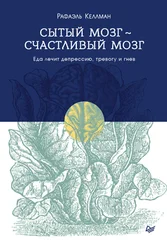O’Connor, Z., Colour psychology and colour therapy: Caveat emptor. Color Research & Application, 2011. 36 (3): p. 229–234.
Utevsky, A.V. and M. L. Platt, Status and the Brain. PLoS Biology, 2014. 12 (9): p. e1001941.
Costandi, M., The Brain Boasts Its Own Social Network, in Scientific American. 2017, @sciam: scientificamerican.com.
Gil, M., et al., Social reward: interactions with social status, social communication, aggression, and associated neural activation in the ventral tegmental area. Eur J Neurosci, 2013. 38 (2): p. 2308–18.
Samson, A.C. and J. J. Gross, Humour as emotion regulation: the differential consequences of negative versus positive humour. Cogn Emot, 2012. 26 (2): p. 375–84.
Isenberg, D.J., Group polarization: A critical review and meta-analysis. Journal of personality and social psychology, 1986. 50 (6): p. 1141.
Scheepers, D., et al., The neural correlates of in-group and self-face perception: is there overlap for high identifiers? Frontiers in Human Neuroscience, 2013. 7: p. 528.
Murphy, J.M., et al., Depression and anxiety in relation to social status: A prospective epidemiologic study. Archives of General Psychiatry, 1991. 48 (3): p. 223–229.
De Dreu, C.K., et al., Oxytocin promotes human ethnocentrism. Proceedings of the National Academy of Sciences, 2011. 108 (4): p. 1262–1266.
Hart, A.J., et al., Differential response in the human amygdala to racial outgroup vs ingroup face stimuli. NeuroReport, 2000. 11 (11): p. 2351–2354.
Avenanti, A., A. Sirigu, and S. M. Aglioti, Racial Bias Reduces Empathic Sensorimotor Resonance with Other-Race Pain. Current Biology, 2010. 20 (11): p. 1018–1022.
Zebrowitz, L.A., B. White, and K. Wieneke, Mere Exposure and Racial Prejudice: Exposure to Other-Race Faces Increases Liking for Strangers of That Race. Social cognition, 2008. 26 (3): p. 259–275.
Rupp, H.A. and K. Wallen, Sex Differences in Response to Visual Sexual Stimuli: A Review. Archives of sexual behavior, 2008. 37 (2): p. 206–218.
Cummins, R.G., Excitation Transfer Theory, in The International Encyclopedia of Media Effects. 2017, John Wiley & Sons, Inc.
Blaszczynski, A. and L. Nower, A pathways model of problem and pathological gambling. Addiction, 2002. 97 (5): p. 487–499.
De Brabander, B., et al., Locus of control, sensation seeking, and stress. Psychol Rep, 1996. 79 (3 Pt 2): p. 1307–12.
Patoine, B., Desperately Seeking Sensation: Fear, Reward, and the Human Need for Novelty. The Dana Foundation, 2009.
Bouter, L.M., et al., Sensation seeking and injury risk in downhill skiing. Personality and individual differences, 1988. 9 (3): p. 667–673.
McCutcheon, K., Haemophobia. Journal of perioperative practice, 2015. 25 (3): p. 31–31.
Dean Burnett, James Foley’s murder, and the psychology of our fascination with the gruesome – Telegraph, in The Telegraph. 2014, @Telegraph.
Varma-White, K., Morbid curiosity: Why we can’t look away from tragic images – TODAY.com. 2014, The Today Show: Today.com.
Brakoulias, V., et al., The characteristics of unacceptable/taboo thoughts in obsessive – compulsive disorder. Comprehensive psychiatry, 2013. 54 (7): p. 750–757.
Roberts, P., Forbidden Thinking. 1995, Psychology Today: Psychology Today.
Johnson-Laird, P.N., Mental models and human reasoning. Proceedings of the National Academy of Sciences, 2010. 107 (43): p. 18243–18250.
Wegner, D.M., et al., Paradoxical effects of thought suppression. 1987, American Psychological Association: US. p. 5–13.
Mann, T. and A. Ward, Forbidden fruit: Does thinking about a prohibited food lead to its consumption? International Journal of Eating Disorders, 2001. 29 (3): p. 319–327.
Etchells, P.J., et al., Prospective Investigation of Video Game Use in Children and Subsequent Conduct Disorder and Depression Using Data from the Avon Longitudinal Study of Parents and Children. PLOS ONE, 2016. 11 (1): p. e0147732.
Burnett, D. Women and yogurt: what’s the connection? Brain Flapping 2013 2013–08–30; Available from: http://www.theguardian.com/science/brain-flapping/2013/aug/30/women-yogurt-connection-advertising.
Straus Jr, W.L. and A.J.E. Cave, Pathology and the posture of Neanderthal man. The Quarterly Review of Biology, 1957. 32 (4): p. 348–363.
Lee, M. Why Are Babies’ Heads So Large in Proportion to Their Body Sizes? 2017; Available from: http://www.livestrong.com/article/506251-why-are-babies-heads-so-large-in-proportion-to-their-body-sizes/.
Barras, C., The real reasons why childbirth is so painful and dangerous. 2016, BBC Earth: www.bbc.com.
Institute of, M., From Neurons to Neighborhoods: The Science of Early Childhood Development, ed. P. S. Jack and A. P. Deborah. 2000, Washington, DC: The National Academies Press.
Harlow, H.F., Love in infant monkeys. 1959: WH Freeman San Francisco.
Houston, S.M., M. M. Herting, and E. R. Sowell, The Neurobiology of Childhood Structural Brain Development: Conception Through Adulthood. Current topics in behavioral neurosciences, 2014. 16: p. 3–17.
Stafford, T., Why all babies love peekaboo. 2014, BBC_Future.
HarvardCenter. Five Numbers to Remember about Early Childhood Development – Center on the Developing Child at Harvard University. 2017; Available from: https://developingchild.harvard.edu/resources/five-numbers-to-remember-about-early-childhood-development/.
Dahl, R.E., Sleep and the Developing Brain. Sleep, 2007. 30 (9): p. 1079–1080.
Danese, A. and B.S. McEwen, Adverse childhood experiences, allostasis, allostatic load, and age-related disease. Physiology & Behavior, 2012. 106 (1): p. 29–39.
Shonkoff, J.P., et al., The lifelong effects of early childhood adversity and toxic stress. Pediatrics, 2012. 129 (1): p. e232-e246.
Avants, B., et al. Early childhood home environment predicts frontal and temporal cortical thickness in the young adult brain. in Society for Neuroscience annual meeting. 2012.
Jack, F., et al., Maternal Reminiscing Style During Early Childhood Predicts the Age of Adolescents’ Earliest Memories. Child Development, 2009. 80 (2): p. 496–505.
Brink, T.T., et al., The Role of Orbitofrontal Cortex in Processing Empathy Stories in 4- to 8-Year-Old Children. Frontiers in Psychology, 2011. 2: p. 80.
Neisser, U., et al., Intelligence: Knowns and unknowns. American psychologist, 1996. 51 (2): p. 77.
Читать дальше
Конец ознакомительного отрывка
Купить книгу












